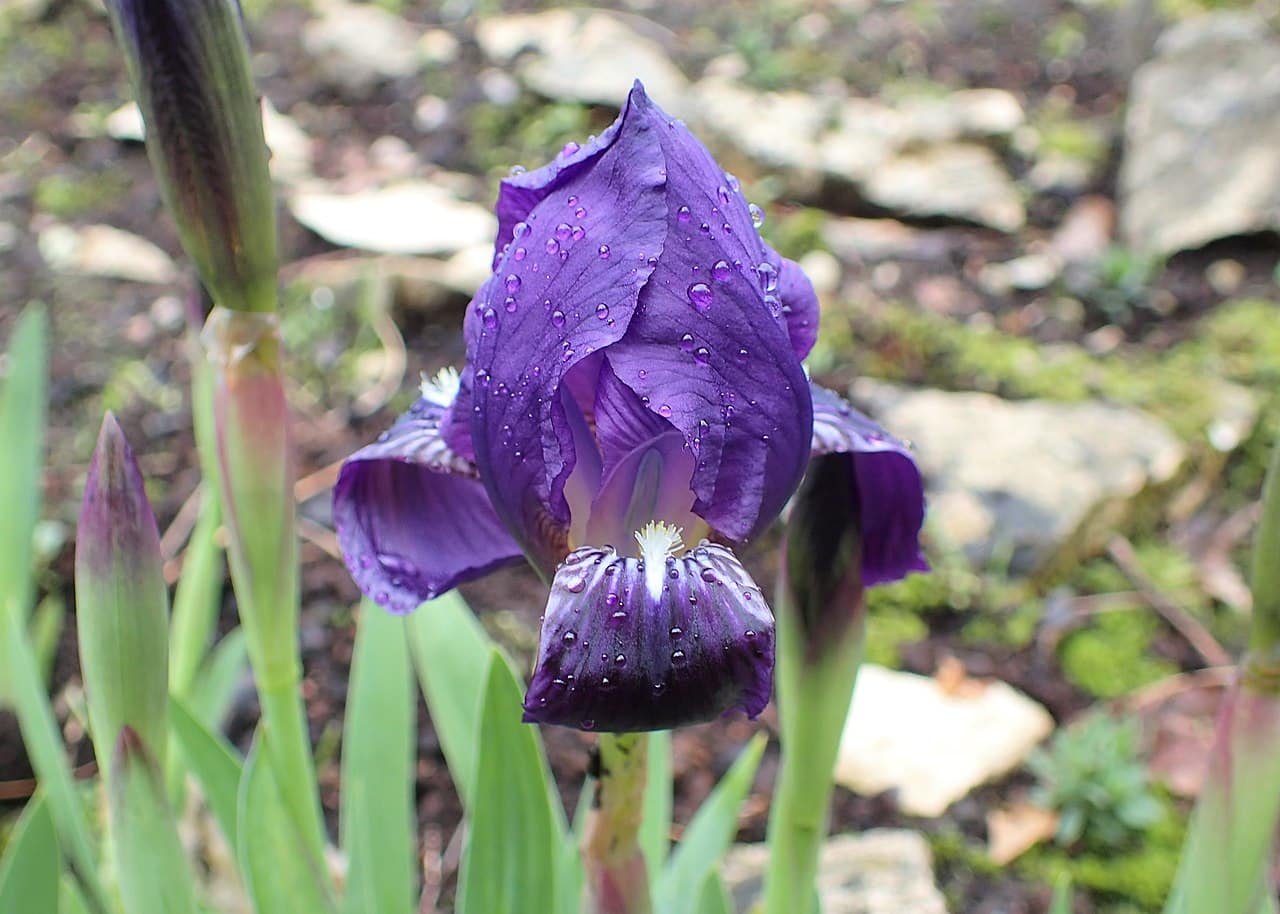
Image - Wikimedia / Krzysztof Ziarnek, Kenraiz
There are many types of lilies, and I am not referring only to the variety of pure species that have been described -which are more than 300-, but I also include cultivars. These plants, which flower for quite a long period of time as soon as the cold begins to give way to milder temperatures, are exceptional in that, In addition to producing beautiful flowers, they are very easy to care for..
Of all the existing ones, in this article we are going to focus on one: the iris lutescens. This is a pure species that we find in the Mediterranean region, so we can already tell you that it can withstand the heat typical of the area very well, as well as weak frosts.
Where is it from and what characteristics does it have?
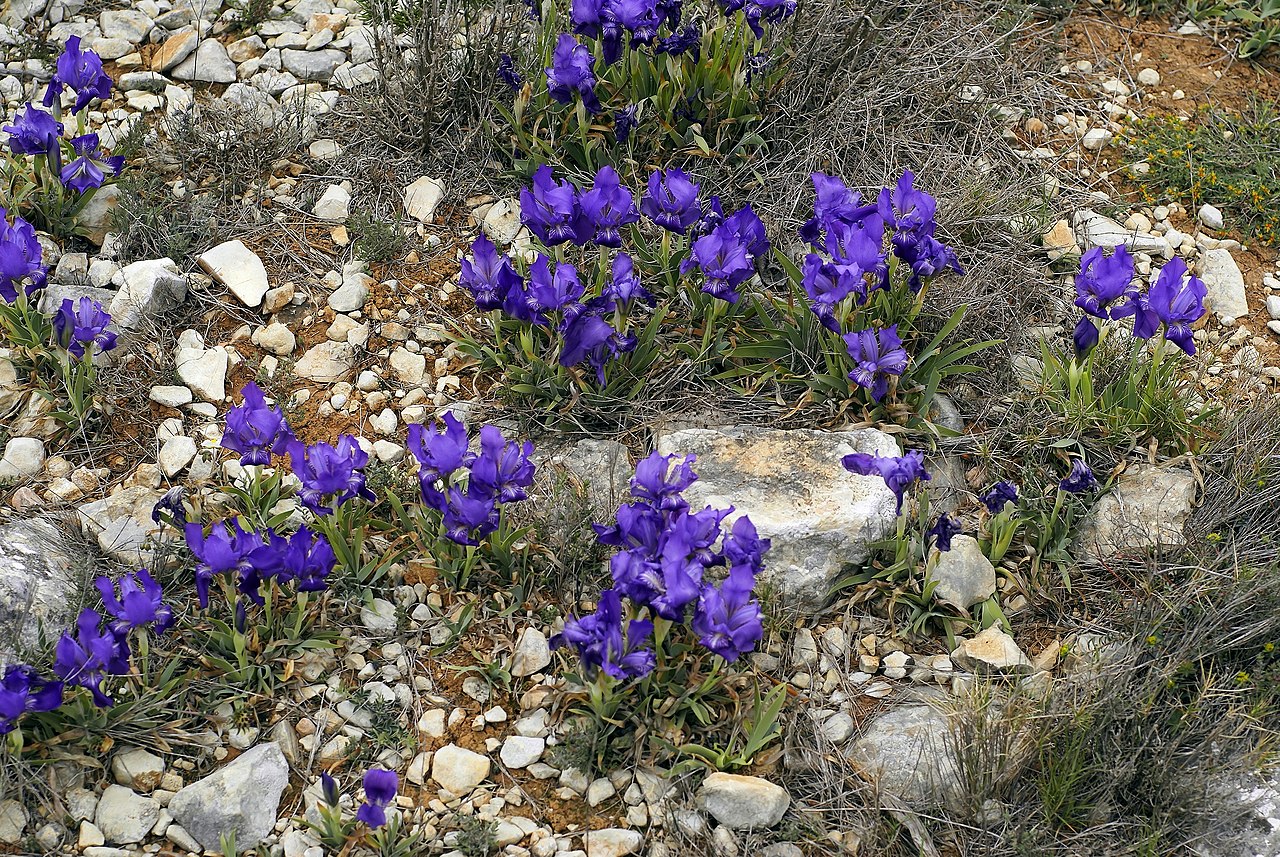
Image - Wikimedia / Hans Hillewaert
Although we have said that it grows in the Mediterranean, if we want to go see the iris lutescens In person, in its natural habitat, where do we have to go? Well then lives in the western Mediterranean, to be more exact in the southeast of the Iberian Peninsula. It grows on calcareous soils, forming part of the bushes that are exposed to sunlight practically all day, at an altitude of between 1400 and 2000 meters above sea level.
It is a small rhizomatous plant, which even with the flower does not exceed 25 centimeters high, which belongs to the genus Iris (lilies). It develops simple, entire and rigid leaves, as well as erect and green. The flower can appear alone or together with another, and it is lilac in color. After flowering, it withers but the rhizome remains, from which new leaves will sprout next spring.
What care do you need?
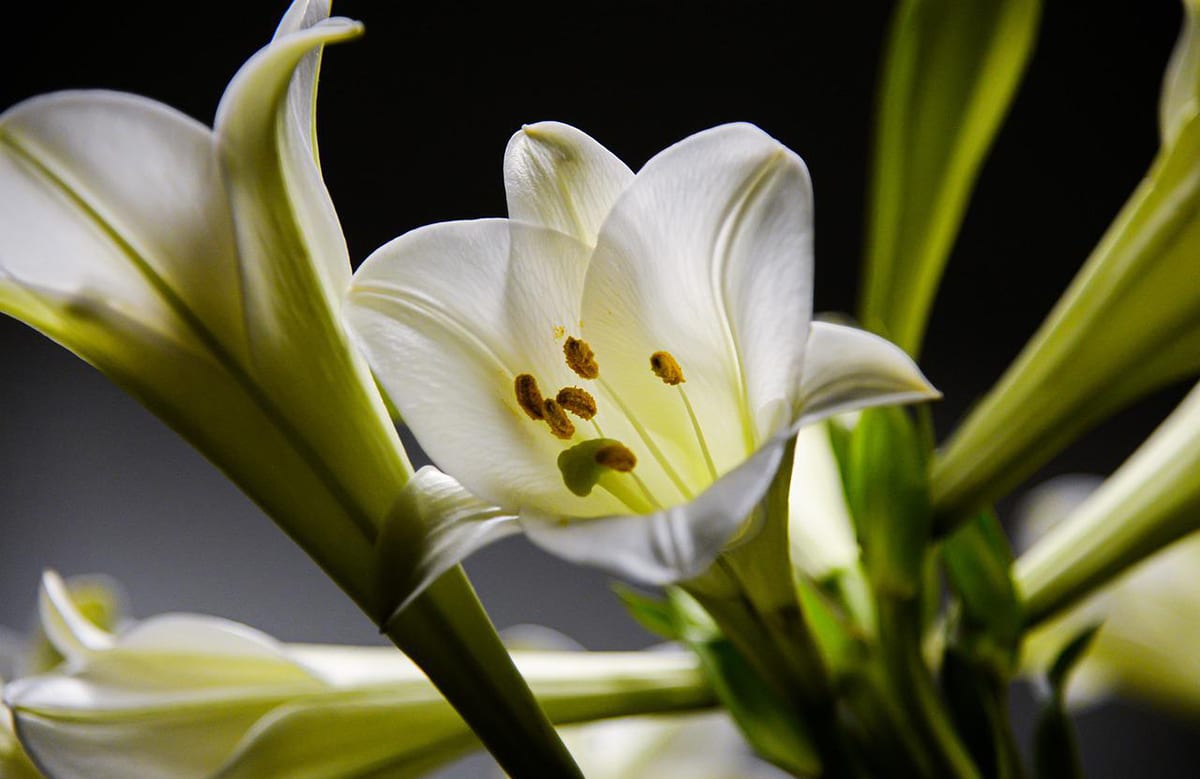
If you ever think about growing the wild lily, also known as the dwarf mountain lily, you have to know what it needs so that you can see its flowers every year. So now we will tell you everything you need to know so that you can enjoy it:
Where should it be placed?
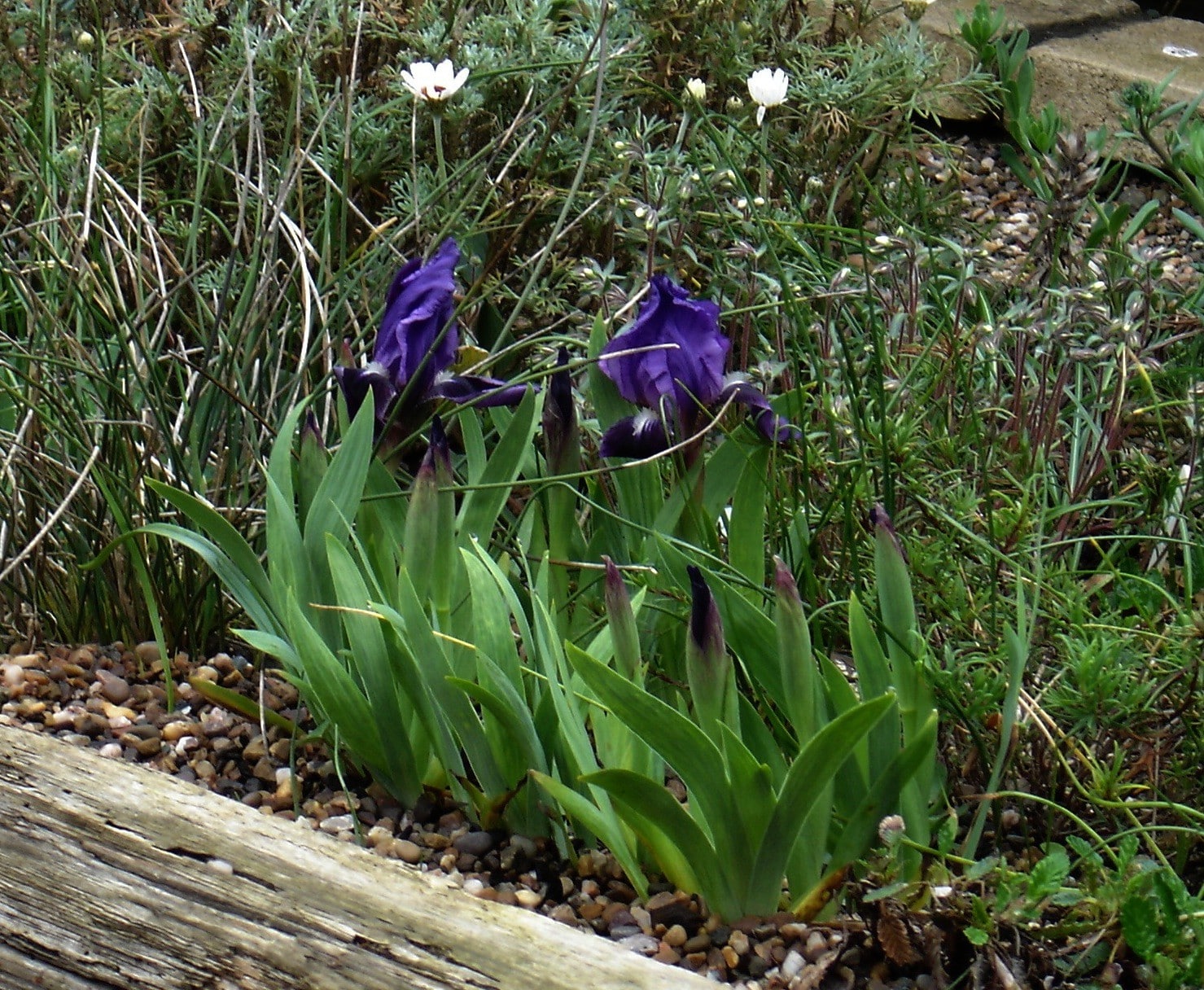
Image - Flickr / peganum
The first thing you have to keep in mind is that It is a plant that we would call 'outdoor' (I put it in quotes because, really, there are no indoor plants, for the simple reason that all of them, in their natural habitat, grow outdoors).
As we said, it is a species that lives in the mountains, and also at high altitudes, so we can assume that it supports cold without problems (not extreme, since in the southeast of the Iberian Peninsula the winters are quite mild ).
What type of soil do you need?
As it grows in clayey soils, that is, in soils with a pH of 7 or a little higher, you have to plant it in lands that are also like this. And if you are interested in having it in a pot, you have to fill it with a universal substrate from a well-known brand, such as weedness o Flower (although these others are also interesting: Westland y No products found.). By clicking on the links you can buy the one that interests you.
When do you have to water it?
You should water the wild lily from time to time. It does not resist drought. It is a plant that needs to be rehydrated on a regular basis., so that you can perform your functions normally. Although it originates from the Mediterranean, which is a region where droughts are common, in winter and spring it usually rains with some frequency. This, added to the high environmental humidity, which means that every day the landscape literally wakes up wet (for example, I am attaching an image of one of my alocasias, taken one morning at the end of December), the Iris does not go thirsty. in any moment.
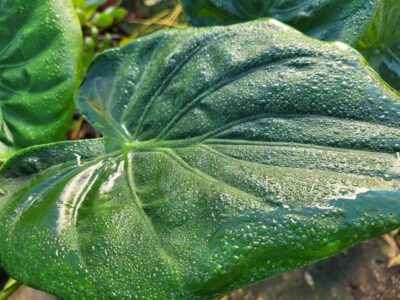
A picture of me Alocasia wentii, taken in winter. Just by looking at it you can appreciate the humidity so high that there is (was) in the environment. In my area (south of the island of Mallorca, about 6km from the coast) it is 60-90%.
Does it have to be paid?
It is highly recommended to do so, yes. Especially if it is in a pot, I recommend fertilizing it as soon as you see that its leaves begin to sprout, and until the flowers begin to wither.. For this, it is interesting to use fertilizers of organic origin, which are, for example, the manure of herbivorous animals, compost, or even worm humus (for sale here).
Just one detail: if you have it in a container, it is preferable to use liquid fertilizers and not in powder so that the drainage continues to be optimal, and also, so that the roots can absorb the nutrients more quickly.
When should it be planted?
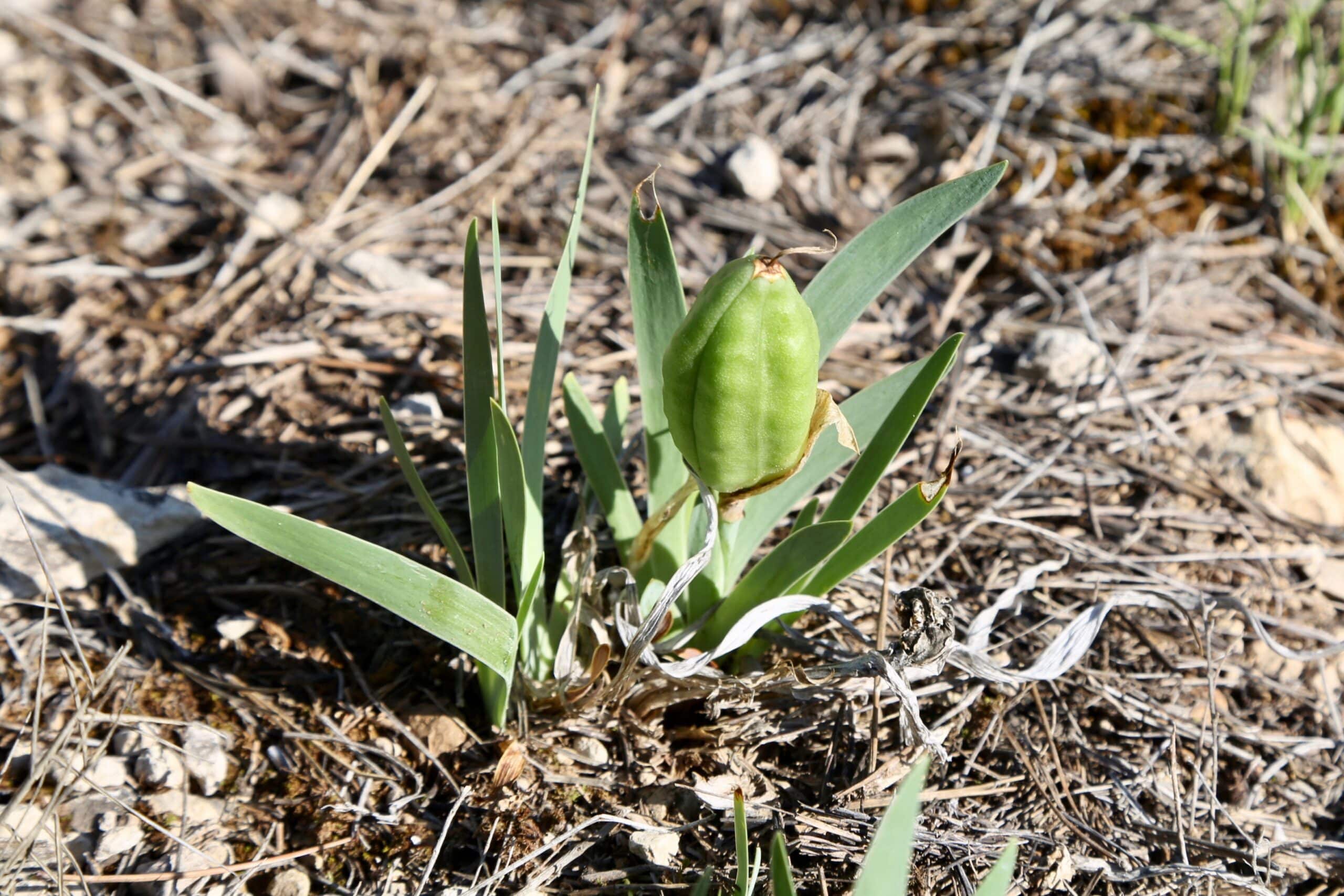
Image – Wikimedia/Dr. Alexei Yakovlev
If we take into account that the iris lutescens it blooms in spring, its planting time is about 3-4 months before. This means that should be planted either in late fall or early winter at the latest. In any case, once you have it in the ground or in a pot, you will not have to take it out and store it after flowering, but you can leave it there.
What is its rusticity?
The dwarf mountain lily supports frosts of up to -5ºC as long as they are punctual, as well as temperatures of up to 35ºC.
Have you heard of the iris lutescens?